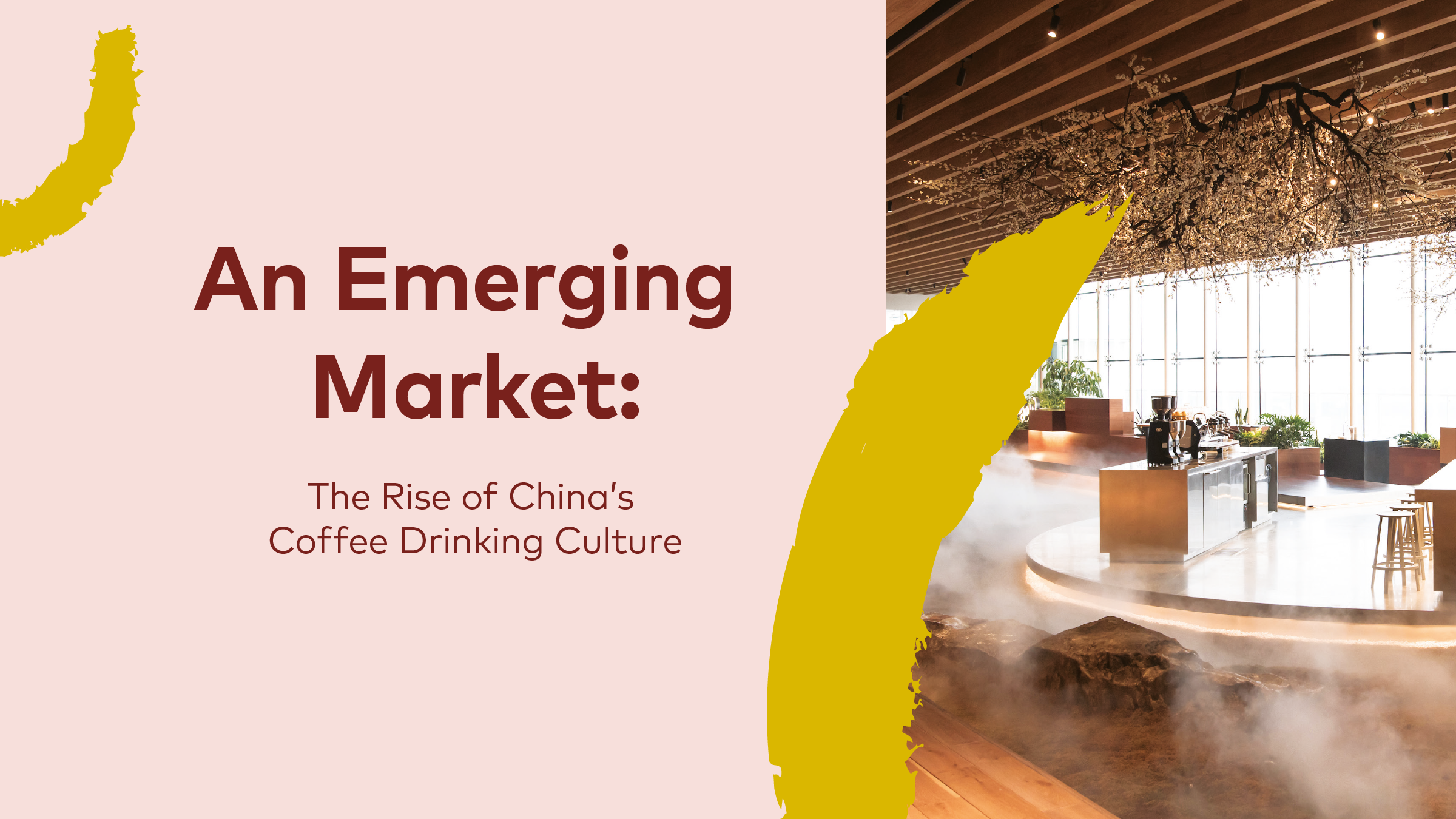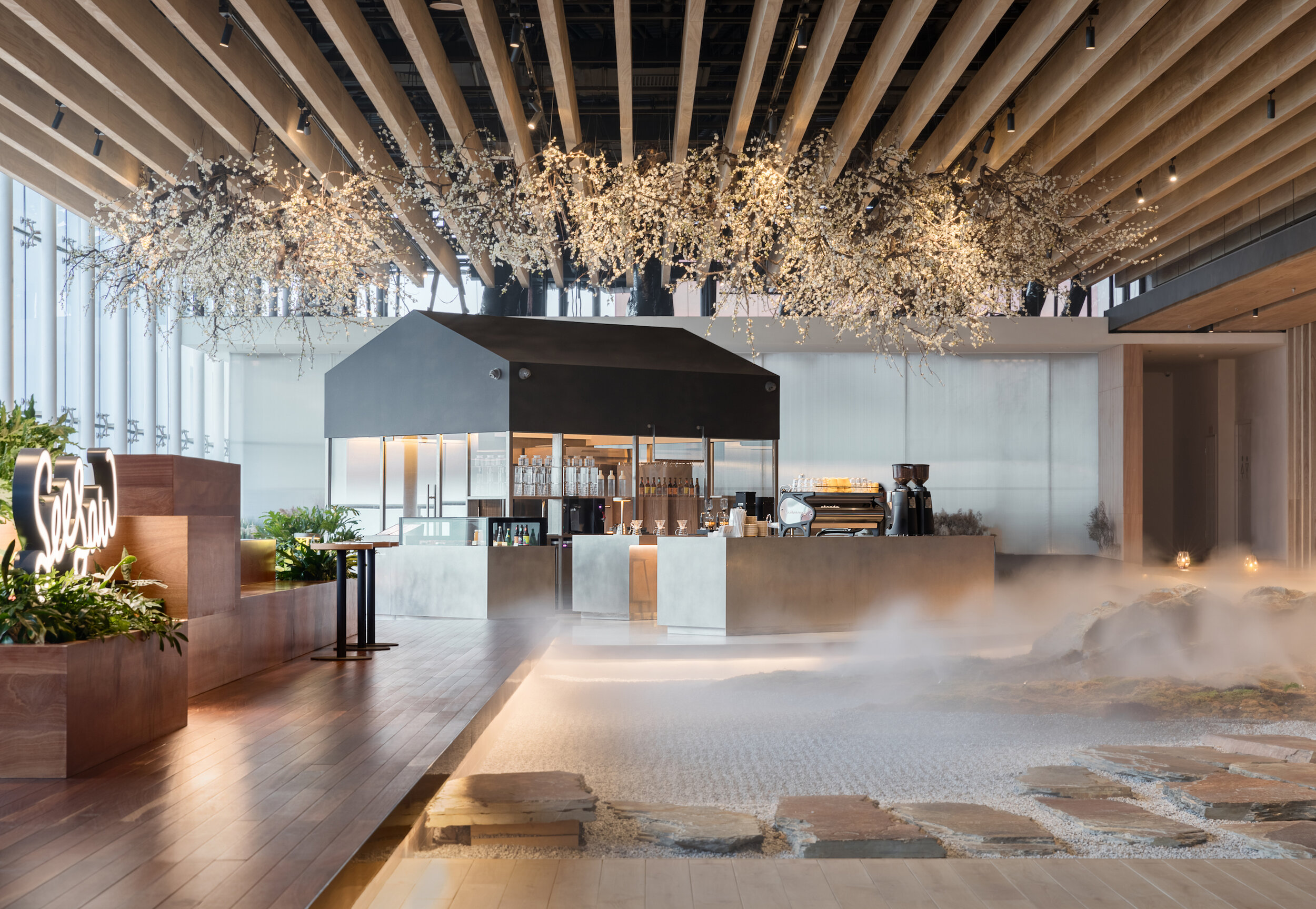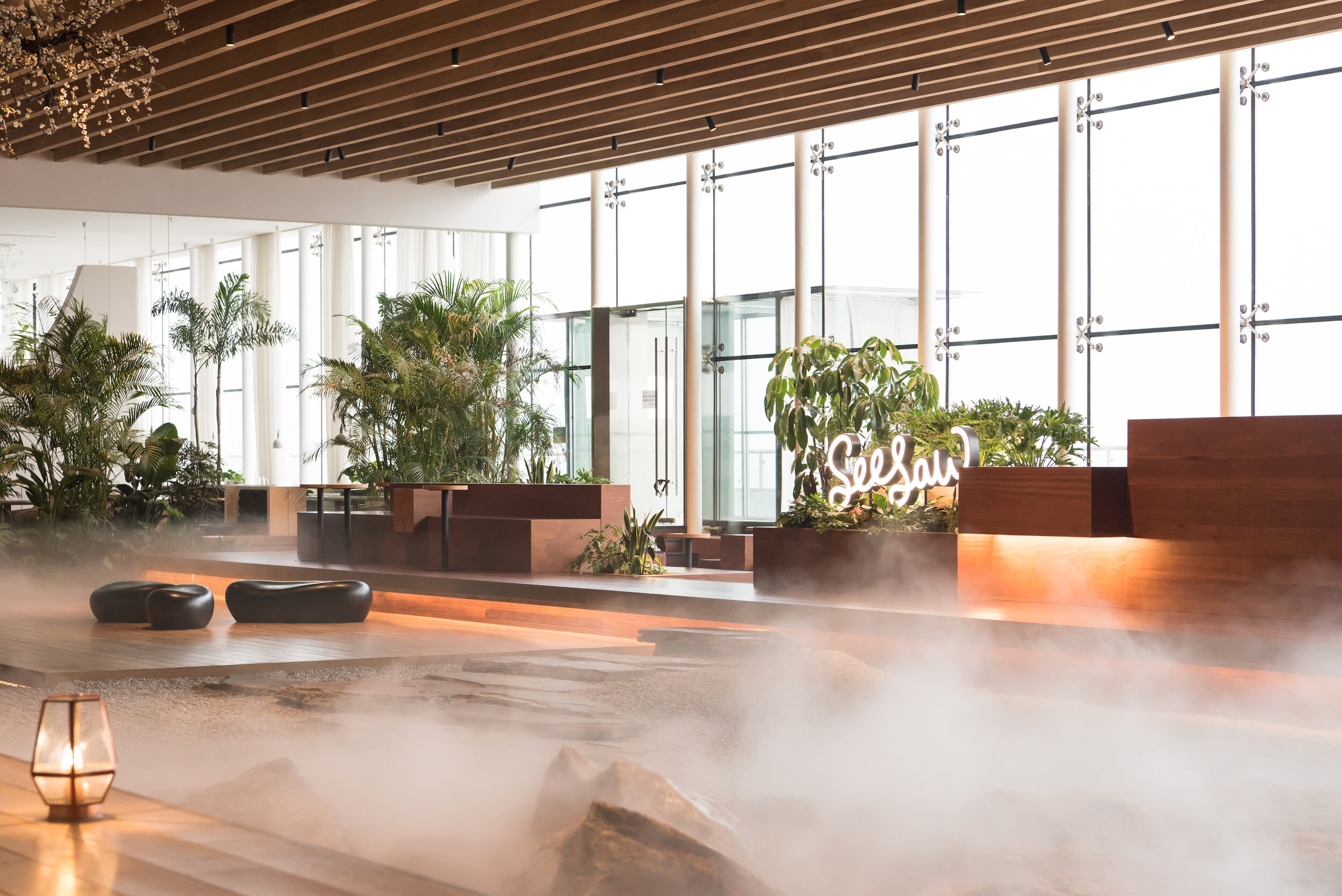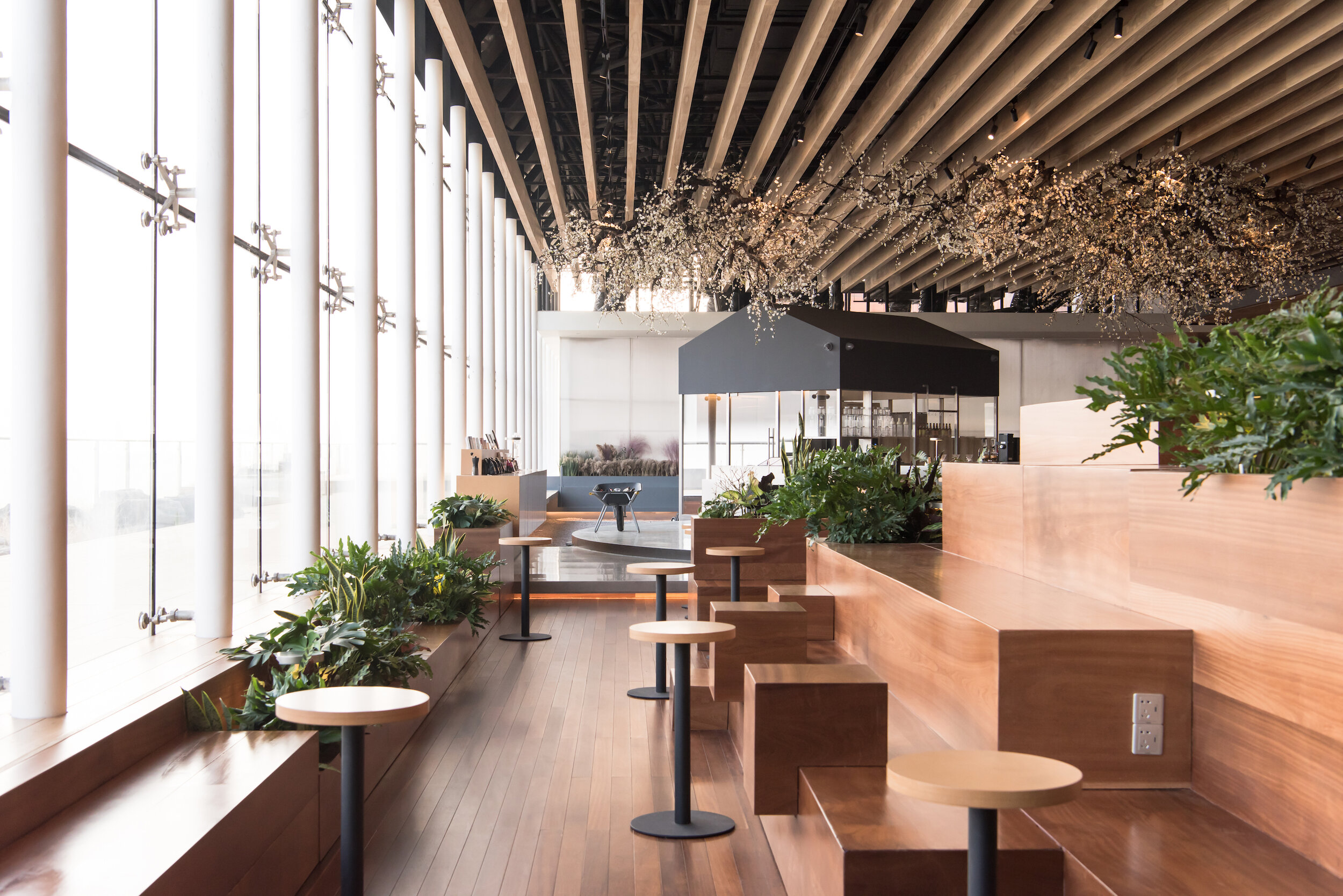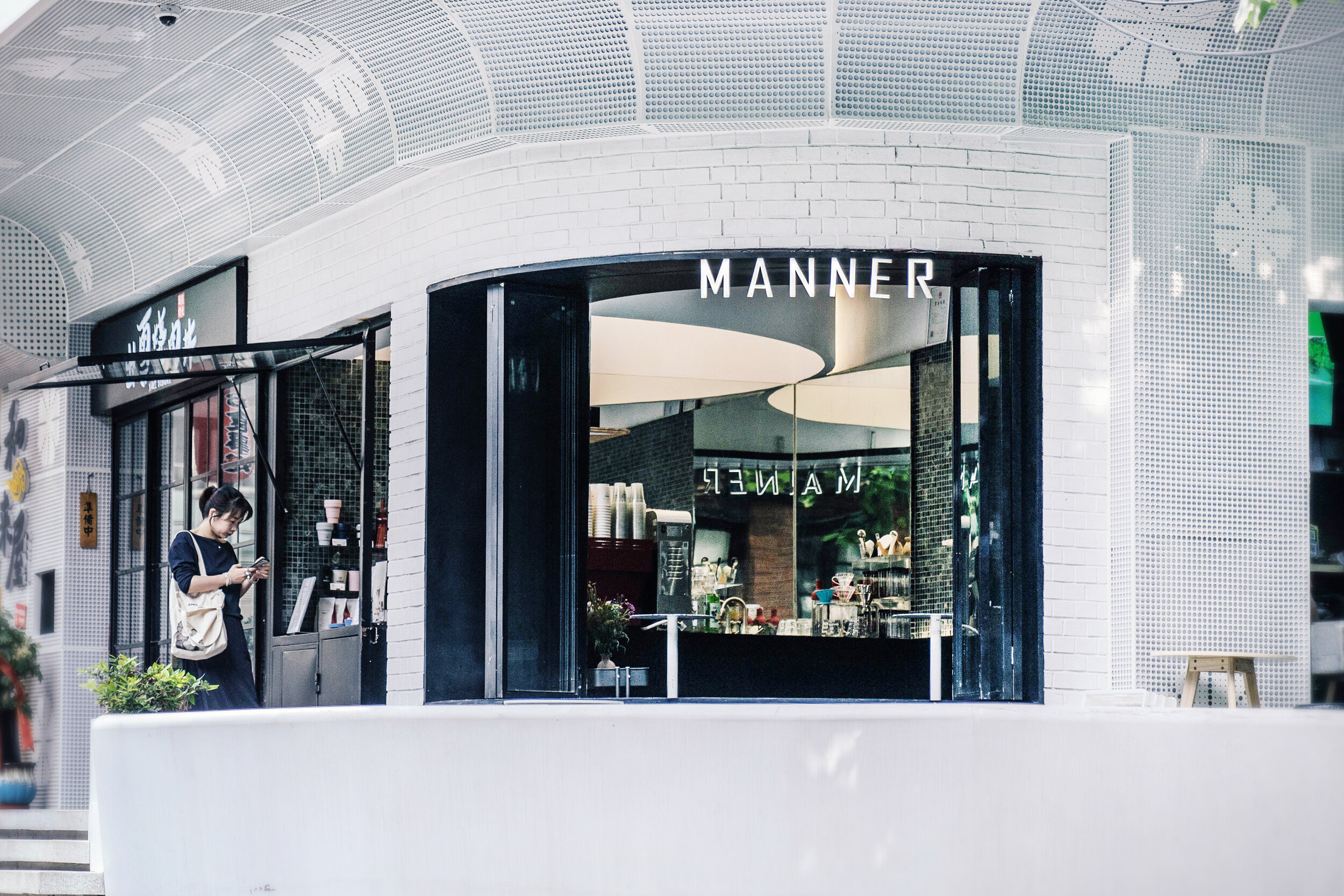An Emerging Market: The Rise of China’s Coffee Drinking Culture | 25, Issue 13
It was 1988 when Nestlé first sold instant coffee in China, a pitch-black liquid with an aroma reminiscent of rebellion—credited by some as the rise of Western food culture in the Far East.
NICOLE LIN and CHARLEY BIDDLE share their view of the Chinese coffee market, tracing its rise through to the unexpected impacts of 2020’s COVID-19 pandemic.
By 1999, freshly ground coffee was presented to Chinese alongside a dose of drama (cue Sex and the City). Starbucks opened its first shop in Beijing, selling not only coffee, but the allure of a different—Western—lifestyle.
During the nineties, many Western food and beverage companies quickly gained traction in China. Among them, Häagen- Dazs began to serve illy coffee alongside ice cream, creating a premium brand image. It was a time of rapidly changing food culture: previously unexperienced “luxuries” of decadent sundaes, greasy hamburgers, crispy French fries, and aromatic coffees cemented themselves in modern Chinese lifestyle.
Since then, China’s coffee market has developed on pace with China’s broader economy and society, if not faster. However, coffee’s popularity in China is not only driven by Western companies’ growth, but also by changing perceptions and food and beverage priorities of a younger Chinese generation. Chinese millennials and Gen Z are particularly open-minded and hungry for new experiences. This is a major factor in the Chinese specialty coffee boom seen throughout the last decade—millions of young coffee aficionados searching for new cafés to try.
The Rise of Specialty
Seesaw Coffee, widely considered to be a domestic pioneer of specialty coffee, opened its first shop in Shanghai in 2012 (today, Seesaw has 23 shops in 4 cities). Other domestic specialty coffee brands have followed suit, taking advantage of this trend in the Chinese market and quickly establishing boutique-brand coffee shops across tier one Chinese cities.[1]
It is common for local specialty coffee chains to operate roughly 10–30 sit-in cafés, but some brands have adopted takeaway store models and have managed to open over 50 stalls nationwide.
Manner Coffee is one such example: Founded in 2015 with a single location in Shanghai’s central business district, Manner Coffee focuses on a small selection of high-quality, reasonably priced beverages, and provides discounts if customers bring their own cups. Manner’s business is takeaway-only. This successful model attracted venture capital investment, and Manner has expanded to over 90 shops across China today.
The Growth of Chains
Such expansive growth is not limited to start-ups, however. Household name brands have also stormed the Chinese coffee market in recent years. KFC’s parent company, Yum! Brands, announced the development of two coffee brands in 2019: K Coffee and COFFii&JOY. K Coffee operates in parallel with KFC’s traditional fast food business, and focuses on convenience and value for money across its more than 6,000 outlets. COFFii&JOY, on the other hand, is Yum! Brand’s entry to specialty coffee— targeting the artisanal and experience-driven consumer market (it now has 50 shops across China).
Yet another contender from Yum! Brand is its January 2020 collaboration with Lavazza to open a flagship Shanghai café. No longer selling only a broad Western lifestyle concept, Lavazza has positioned itself as a distinctly Italian- experience destination in China. With this location’s success will come an additional 10 stores opening soon. Additional brands selling a taste of their home-markets’ culture include:
Tim Hortons, a prominent Canadian coffee and donut chain, has opened 50 stores in China since 2019 and recently received further investment from Tencent Holdings Ltd.
Peet’s Coffee, headquartered in San Francisco, US, entered China in 2017 and will have opened 20 store fronts by the end of 2020.
% Arabica, a Japanese chain from Kyoto driven by the philosophy to “see the world through coffee,” has 20 cafés in China today.
Each of these brands used its distinct style to carve out a customer base, but in such a dense market, customer loyalty remains one of the biggest challenges for brands both large and small. One strategy is to out-pace and out-shine the competition.
Go Big—Fast
In China, speed and scale are king, and in 2018, a Chinese coffee chain called Luckin Coffee proved this point. Within two years, Luckin opened over 4,500 shops in 53 cities, and in 2019, began trading on the NASDAQ Stock Market. Its explicitly stated goal was to overtake Starbucks as the most ubiquitous coffee brand in China. Most of Luckin’s locations are takeaway stalls fulfilling delivery and pick-up orders placed via its app. In the first months of operation, Luckin acquired new customers by giving free coffee to those who recently registered on its platform. Incessant SMS campaigns offering aggressive discounts then channeled repeat sales resulting in 40 million transactions by the end of 2019.
Luckin also set a high bar for local market awareness and even philanthropy, driving growth and supporting consumer loyalty. As COVID-19 swept Wuhan, Luckin rushed to donate its “Luckin Coffee Express”—a fully automatic, autonomous coffee machine—to hospitals at the epicenter of the outbreak in order to provide free coffee for doctors and nurses. This gesture harnessed the power of growing Chinese patriotism felt nationally as the country united and rallied against the pandemic.
Despite an unprecedented accounting scandal where Luckin was discovered to have faked US$310 million worth of transactions,[2] there is still much support for the brand: its products are available as usual, and the company continues to seek future opportunities to expand and sell its business.
Diverse Demand, Diverse Supply
Delivery is a staple of life in China: food, cosmetics, pet products, and nearly anything else are but a click away. Luckin’s strategy to support a delivery service for single cups of low-price coffee was immediately accepted by Chinese consumers. By comparison, grabbing a coffee in a traditional café quickly felt inconvenient. There is no denying that Luckin is an innovative market leader. However, consumers who drink delivery coffee from Luckin and those who choose to sit in specialty coffee shops fall into different categories: those who seek caffeine and convenience and those who seek taste and experience.
With such a large Chinese population there is inevitably some overlap between segments. For example, customers who enjoy Manner’s takeaway coffee may opt to have Luckin deliver a large, "bang- for-buck" quantity for an office meeting. Later, this same consumer may prefer to meet a client in a comfortable Seesaw café since neither Manner nor Luckin provides comfortable seating.
Luckin’s entry into the Chinese coffee market with substantial investment and unprecedented growth rocked the coffee industry and has encouraged development on behalf of providers, consumers, and investors:
Coffee chains including Starbucks and McCafé have adopted delivery models despite concerns that transport may negatively impact the coffee’s taste.
National awareness of freshly ground coffee has skyrocketed, and it is being advertised as an inexpensive, necessary, daily pleasure.
Coffee has become an iconic venture capital-investing target in China; both Seesaw and Manner Coffee have received additional investment to compete with players like Luckin in the market.
Regional Preferences Emerge
As coffee consumption continues to grow, the role of China’s diverse food and beverage cultures on consumer preferences and trends becomes clearer. China is a huge country with food customs and consumption habits that vary dramatically by region. Imagine for a moment the diversity in food and drink that exists within Europe, and then consider that China and Europe are approximately the same size. There’s a massive variation in flavor and preference in the Middle Kingdom.
The espresso bar takes center stage at La Baracca, an Italian osteria in Shanghai. The restaurant is one of many opening following this year’s COVID-19 lockdown (credit: Gramme Kennedy).
In Shanghai, China’s economic capital, consumers are hungry for new concepts, flavors, and ever-expanding variety. There is demand for continuous excitement and seasonal menus to attract repeat business, helping specialty coffee to become a daily routine for many office workers. This is why Manner Coffee and Seesaw have enjoyed such success here. Consumer support for specialty coffee is even clearer amid the economic impact of COVID-19—independent coffee shops and chain store business remains booming.
Beijing, on the other hand, has a deeper cultural history and artistic emphasis as a city. Consumers here are driven to understand a concept in its entirety, and specialty coffee culture and history is particularly appealing. Noteworthy coffee shops such as SOE (three shops), Metal Hands (six shops), and Voyage Coffee (four shops) began in Beijing and have fed into this consumer demand.
Chengdu, in China’s southwest, is a newer city—trendy and accepting, with a leisurely pace. The tradition here has been to enjoy afternoon tea with friends, play cards, and enjoy life, making coffee culture a modern addition to these historic habits. After the COVID-19 lockdown ended in China, the rebound of the coffee industry in Chengdu has exceeded expectations. Over 70 independent coffee shops opened in July 2020 just prior to the Chengdu Hotelex Exhibition.
And, close to the Hong Kong border, Guangzhou and Shenzhen have nice weather year-round and are known for production and technological innovation respectively. Coffee culture thrives here, too, but consumers are price sensitive and extremely discerning in their taste. Coffee providers here need to be careful balancing price and quality.
In a country with as long a history as China’s, coffee’s impact is but yet a tiny dot on the timeline, and this overview tinier still. However, if the last decade is any indication, there awaits an indelible legacy to be inscribed here by this beverage we love, those we share it with, and those who find ever-changing ways to serve it to us.
NICOLE LIN works as a Project Lead with Simonelli Group in China, a coffee lover lucky to work in the coffee industry. CHARLEY BIDDLE is the General Manager at DKSH Technology Hospitality, Shanghai.
References
[1] The city tier system indicates on a scale from one to five how developed a city is, and is a good indicator of how wealthy and sophisticated local consumers are. Tier one cities are densely populated urban metropolises that have huge economic, cultural, and political influence in China. They include Beijing, Shanghai, Guangzhou, and Shenzen.
We hope you are as excited as we are about our return with the release of 25, Issue 13. A return to print and the availability of these features across sca.coffee/news wouldn’t have been possible without our generous underwriting sponsors for this issue: Bellwether Coffee, DaVinci Gourmet, and Pacific Foods. Thank you so much for your support! Learn more about our underwriters here.

